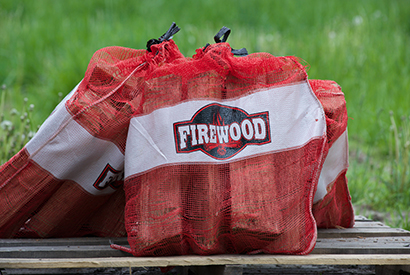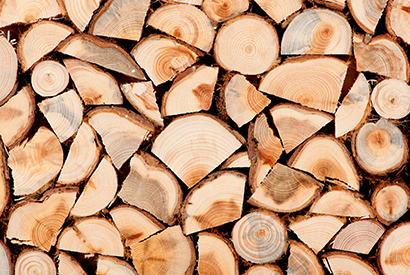Seasoned Wood vs. Partially Seasoned
Our hardwood firewood is a mix of mostly oak with some locust and cherry. Our seasoned firewood has been harvested at least 4 months and our partially seasoned firewood has been harvested for a few weeks, but still needs several months of drying.
What is a cord?
One cord of stacked wood measures four feet high by four feet wide by eight feet long (4 ft. x 4 ft. x 8 ft.) and has a volume of 128 cubic feet. The amount of solid wood in a cord varies depending on the size of the pieces, but for firewood it averages about 85 cubic feet. The rest of the cord volume is air space.
What Is a CU YD Bucket?
A cubic yard bucket is the large bucket that is on our loader. A cu yd bucket of firewood is approximately 80-100 pieces, depending on the size of individual pieces.
How Do I Store Firewood?
Our firewood is stored outside as is industry practice, so the possibility of receiving firewood that has been rained on prior to your delivery date is likely. We always recommend that firewood be purchased well in advance of its use, and that the customer store it in a dry, well-ventilated area prior to burning. Firewood should be kept up off the ground for seasoning to promote drying and prevent mold growth. Free standing firewood stacks need to have straight sides if they are to stay upright for the minimum of four months and maximum of two years needed for seasoning. The shorter the individual pieces, the narrower the stack, and the more wobbly it is likely to be. The mark of a good firewood pile is the way the stack ends. A common method is to crisscross the pieces in alternate layers to form a pillar at the end that is (theoretically) stable in both directions.
How Much Does Firewood Cost?
Here are some of the factors that can affect the price of firewood:
- Energy content: Very soft woods like poplar and spruce have about half the energy content per cord of very hardwoods like white oak or iron wood. Based on energy content, they should cost about half as much per cord. However, processing, transportation and storage costs are the same regardless of species, so while the price of softwoods may be lower, expect to pay considerably more than half the cost of hardwoods.
- Location: Because of shipping and storage costs, firewood sold in urban areas can cost at least double the purchase price in rural areas.
- Dryness: Fully-seasoned firewood usually costs more than green, unseasoned wood because it has been stored for longer.
- Piece size: Firewood processed in shorter lengths and split smaller usually costs more because of the additional handling and labor involved.
- Amount purchased: A bag of firewood purchased at a convenience store will cost more per cord equivalent than the purchase of a full cord or more.


